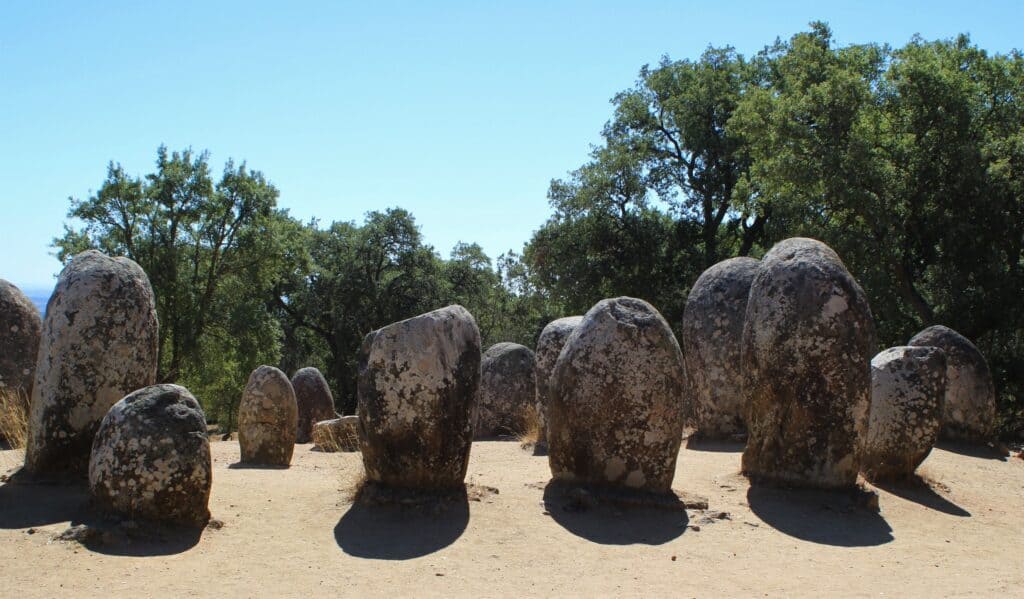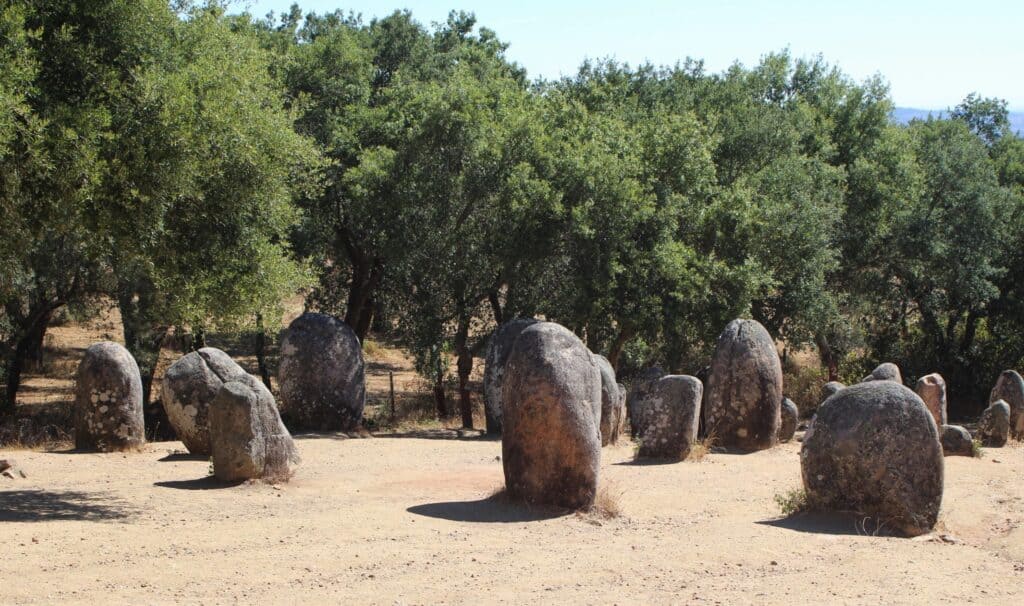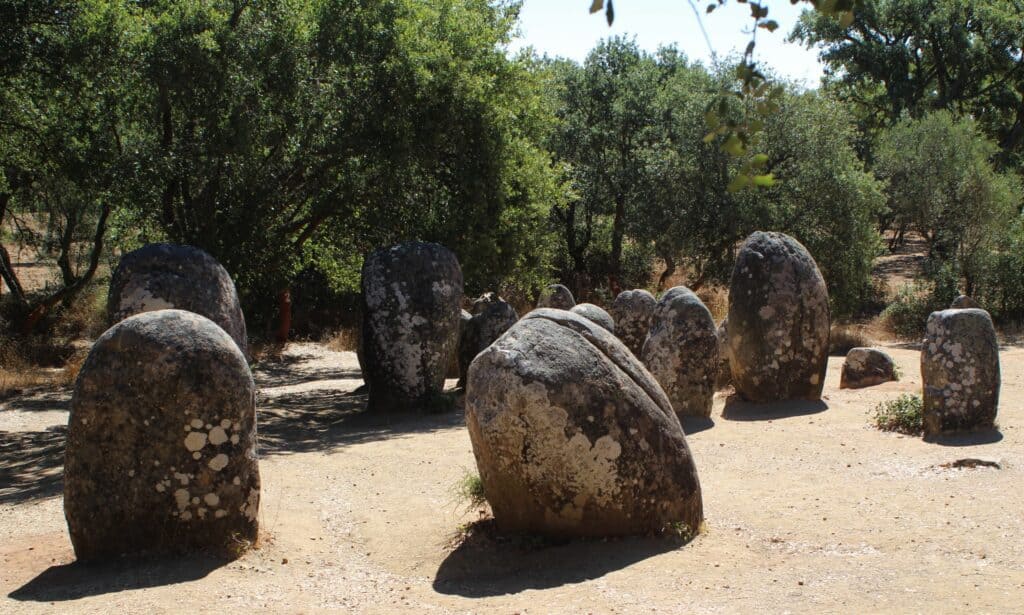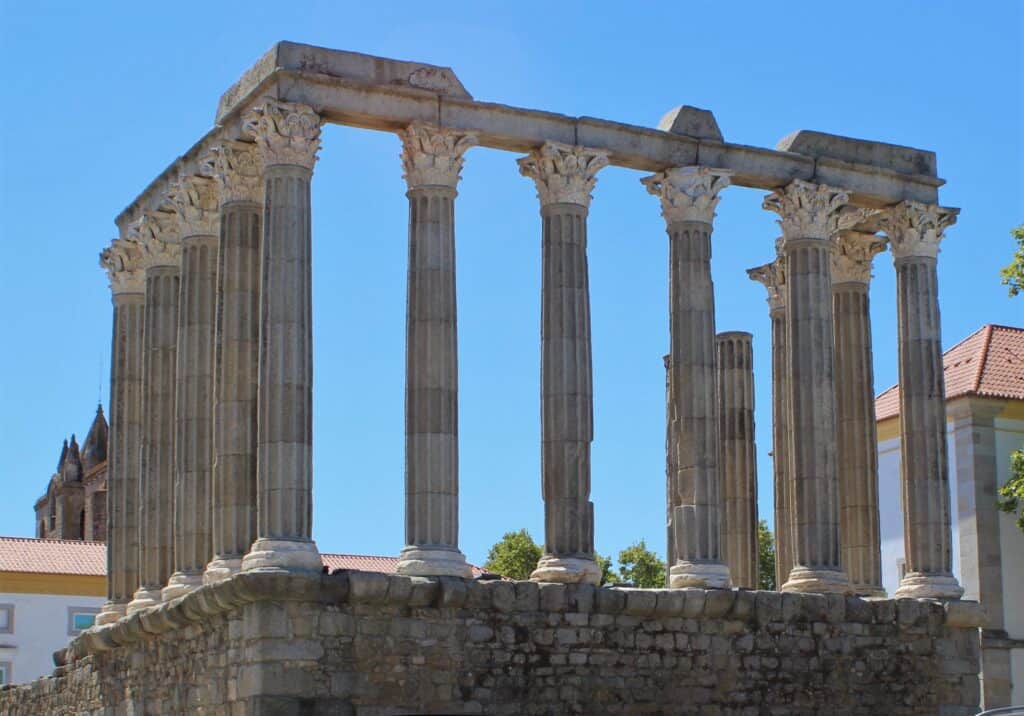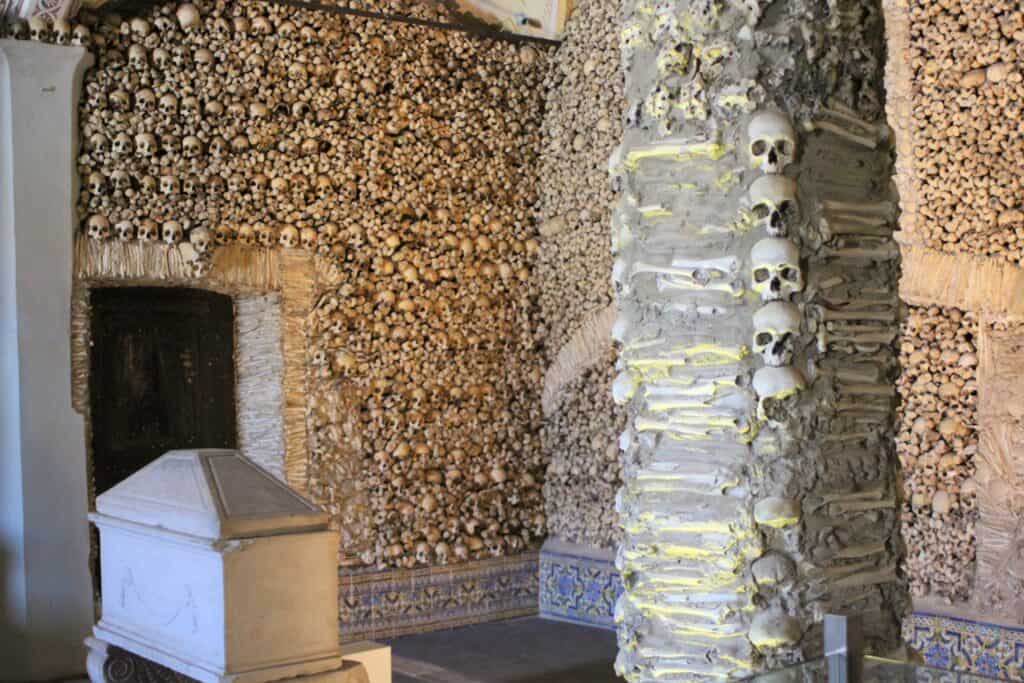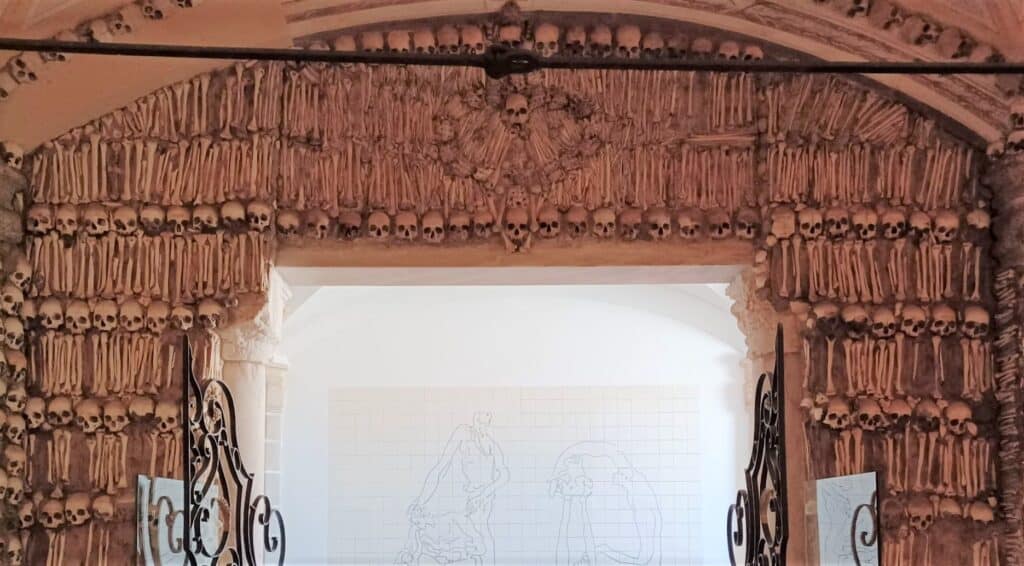Often called “Portugal’s Stonehenge,” these Megaliths actually predate Stonehenge by at least 2,000 years. Unlike the better-known Stonehenge, Almendres Cromlech sees far fewer visitors and you can see the stones up close.
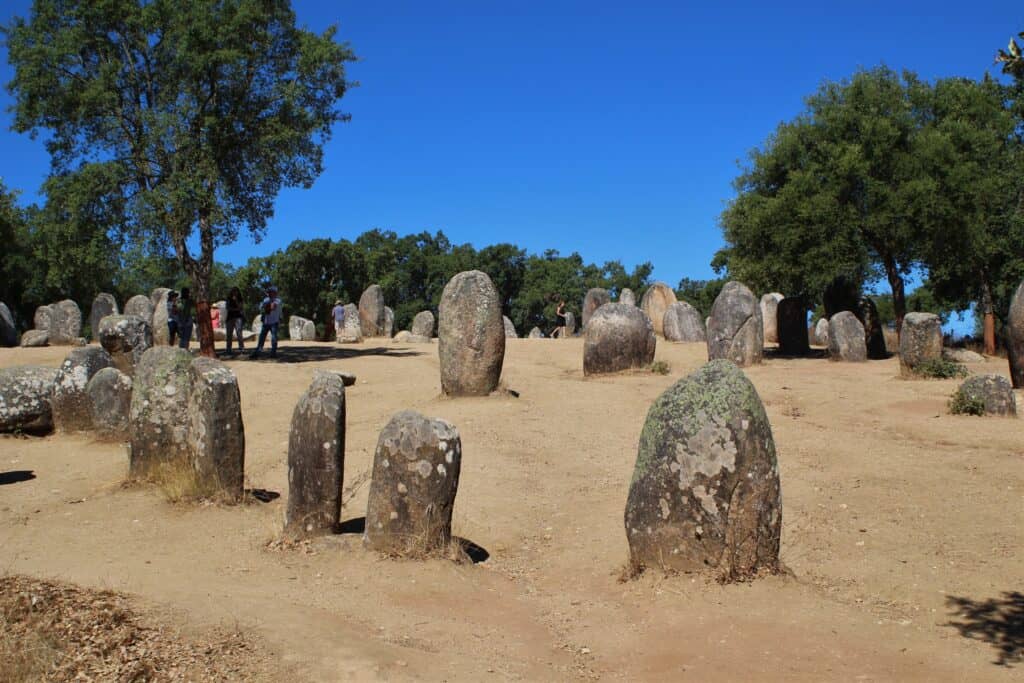
Almendres Cromlech origin story
The Almendres Cromlech is a collection of 95 granite monoliths. The stones range in size from 10 feet high to smaller stones the size of a chair. Over time, the granite stones have suffered from erosion and the markings on them have faded dramatically.
The stones are arranged in two concentric circles. The smaller circle, archeologists believe, was constructed about 6,000 BCE, during the Early Neolithic period. The second, and much larger, circle was constructed around 5,000 BCE with additional stones placed about 4,000 BCE.
The Almendres Cromlech site is the largest megalith installation on the Iberian Peninsula and one of the largest in Europe. Like all megalith arrangements, its purpose isn’t certain. However, because of the way the stones line up with the sun during the spring equinox, it is believed that perhaps the stones served as some kind of celestial clock or observation point.
Several of the stones have carvings in them. The meaning of these carvings, like that of the rock arrangements themselves, remains unknown.
Almendres Menhir
Less than a 10 minute drive (or a dusty 30 minute hike) from Almendres Cromlech is the Almendres Menhir site.
It’s a short hike from the parking area along a narrow and uneven path to the single monolith called Almendres Menhir. The stone sits in an unassuming spot surrounded by farm land. But the stone itself is impressive, standing over 10 feet tall.
After the groupings of granite rocks at Almendres Cromlech, it’s interesting and evocative to see a single monolith jutting skyward.
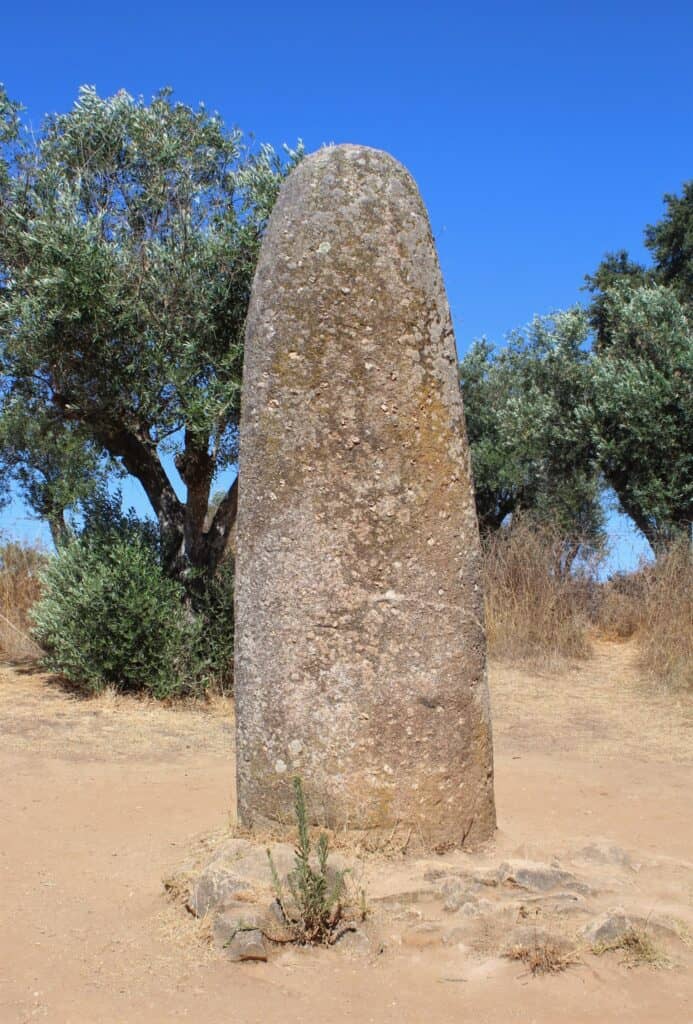
Getting to Almendres Cromlech & Almendres Menhir
The best way to get to Almendres Cromlech & Almendres Menhir is with a car. The stone formations are in the middle of nowhere and there’s not a bus or train station nearby.
Driving up the unpaved road to the archeological site is a rough and bumpy experience. Park in the dirt lot and hike the gravel road to the stones.
From Lisbon, it’s about a 90 minute drive.
Or, book a tour and let the operator get you there.
If you must take public transport, the train from Lisbon gets as close as Casa Branca. From there, it’s about 30 minutes by taxi or rideshare.
Alternatively, you can take the bus from Lisbon to Evora. A taxi or rideshare from Evora is about 25 minutes.
Other Things to Do Nearby
A day trip to Almendres Cromlech & Almendres Menhir from Lisbon is doable. In fact, if you don’t stop to eat and blow through the sites quickly you could probably leave in the early morning and be back in Lisbon by lunch.
But, where’s the fun in all that rushing?
Instead, pair you megaliths with a trip to nearby Evora (less than a 30 minute drive). The Medieval walls, Roman temple, and ossuary (bone chapel) are all worth your time. And, the local pastry, Queijinho do Céu, is worth seeking out. In fact, there’s so much to do in Evora, you might want to spend a day or two there.
Or, after your Almendres Cromlech & Almendres Menhir adventure, drive to Alcácer do Sal (a little over an hour) and wander the riverfront. From there drive to Comporta, check out the beaches and take the car ferry to Setubal. You can spend some time in this lovely waterfront city or drive back to Lisbon (about 45 minutes) over either the Vasco da Gama Bridge or the 25 de Abril Bridge. Both routes afford stunning views of the Tagus River.

About the Author

Brent Petersen is the Editor-in-Chief of Destination Eat Drink. He currently resides in Setubal, Portugal. Brent has written the novel “Truffle Hunt” (Eckhartz Press) and the short story collection “That Bird.” He’s also written dozens of foodie travel guides to cities around the world on Destination Eat Drink, including in-depth eating and drinking guides to Lisbon, Porto, Sintra, Monsaraz, and Evora in Portugal. Brent’s podcast, also called Destination Eat Drink, is available on all podcast platforms.

